My better half is an artist. After a successful career in information technology she retired, and promptly announced that she was going back to school—to art school, that is.
Her life change has gone well, and it has forced a change for me. Like a fish out of water, I now find myself going to art exhibition openings, something that wasn’t previously in my diary entries.
So, what to do when I find myself at an exhibition? Well, I play my own internal game and challenge myself to find three art works that I like, and then try to understand why I like them. Analytical, yes; maybe overly so.
Monochrome—what’s old is new again.
It’s been noticeable that there has been a renewed interest in monochrome photography, especially with the recent introduction of the monochrome versions the Leica M10 and Q2. Some, even, conjecture about whether Fuji will perhaps bring out their own monochrome camera. It was with this in mind that I approached a recent photo exhibition at our local Art Gallery of New South Wales.
The exhibition, titled Shadow Catchers, presented photographs from the gallery’s own collection, concentrating on a technical and artistic approach to imaginative subject matter and composition, as follows
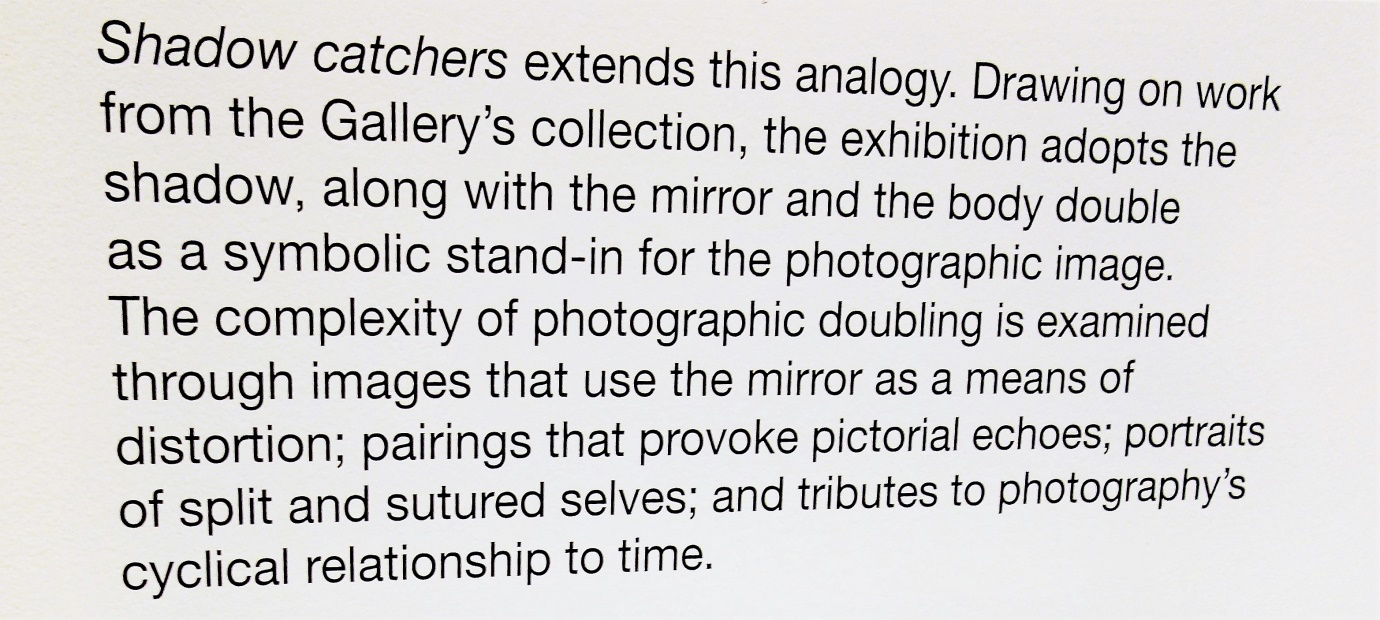
Three images. Personal choices.
My objective, once again, was to find three images that I really liked. They would be ones taken last century, rather than being captured on a new super duper monochrome sensor. Good fun to do, and I wasn’t disappointed.
Number three of my favourites selection was from an untitled image taken around 1930 by a French photographer, Philberte de Flaugergues. The photograph was a gift to the gallery by Gael Newton, the foundation curator of photography. The simplicity of the image conveys a soft gentleness, a depth of emotion, and more basically a great composition and perspective with the mirror.
Number two on my list was a more recent image by Elliott Erwitt, a French American photographer of high repute. Many Macfilos readers will be familiar with his work—if you aren’t then search him out on the ‘net.
The image below doesn’t seem to make it into lists of his iconic photographs, but to me it is riveting. I can’t actually say that I “like” the image. I find it quite disturbing. Mesmerising, yet hard to look at it for more than a few seconds before looking away. Better half has been drumming into me that good art can sometimes be that which makes the viewer uncomfortable. Well, this image certainly does so, for me at least. I continue to wish that it was the result of split-second street photography, but I suspect not—carefully composed and uncomfortably brilliant.
My favourite image is one which some Leica types might be familiar with. A very careful technical setup, with a geometrical precision that appeals to my hard-wired brain. I’ll let the gallery’s description describe it, better than I can, as follows
And here is the photograph. I love it.
Home again
Well, those are my three favourites from that exhibition. I’d encourage us all go to as many art exhibitions as possible. Like me, be a fish out of water, always try to find three examples that you like, and think about why you like them. In fact, you can even do it here on Macfilos with the articles and associated images that our editor Mike prepares for us—perhaps it makes him a curator as well as an editor.
Now, here at home as I prepare this text, I look at the wall of my study and see a monochrome that was produced by Dianne Gerlach (aka my better half). Not a photograph, but a large charcoal drawing. She won a prize with this one a decade ago. I collared it for my study, giving it the title “2009 Global Financial Crisis”. But, snapping back to present reality, I’m sitting here thinking that it could be re-titled “2020 Covid Pandemic”. Ah, another monochrome that strikes a chord.
All images caught with an unobtrusive little Sony RX100, except the last one, resulting from a Leica X1. All hand held, indoors, available light.
Read more from Wayne Gerlach
Make a donation to help with our running costs
Did you know that Macfilos is run by five photography enthusiasts based in the UK, USA and Europe? We cover all the substantial costs of running the site, and we do not carry advertising because it spoils readers’ enjoyment. Every amount, however small, will be appreciated, and we will write to acknowledge your generosity.

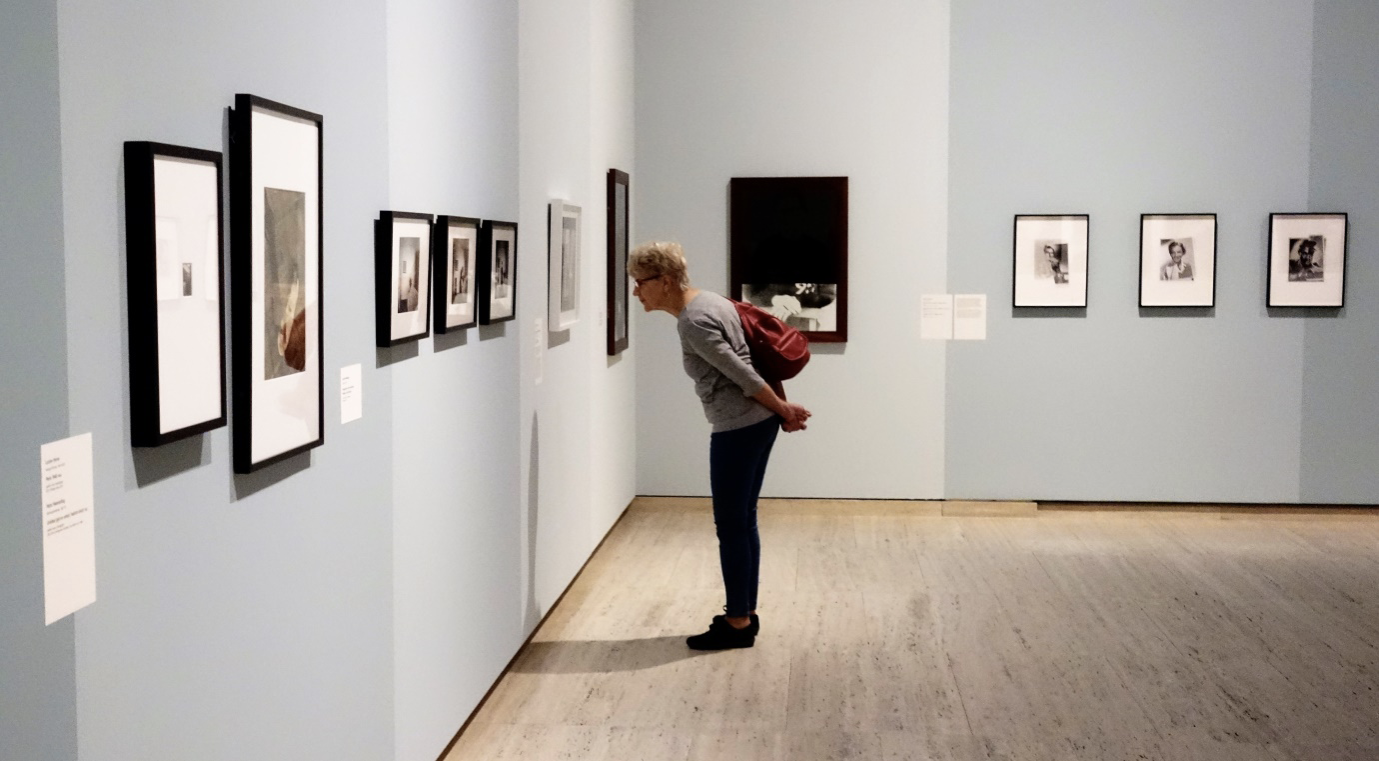
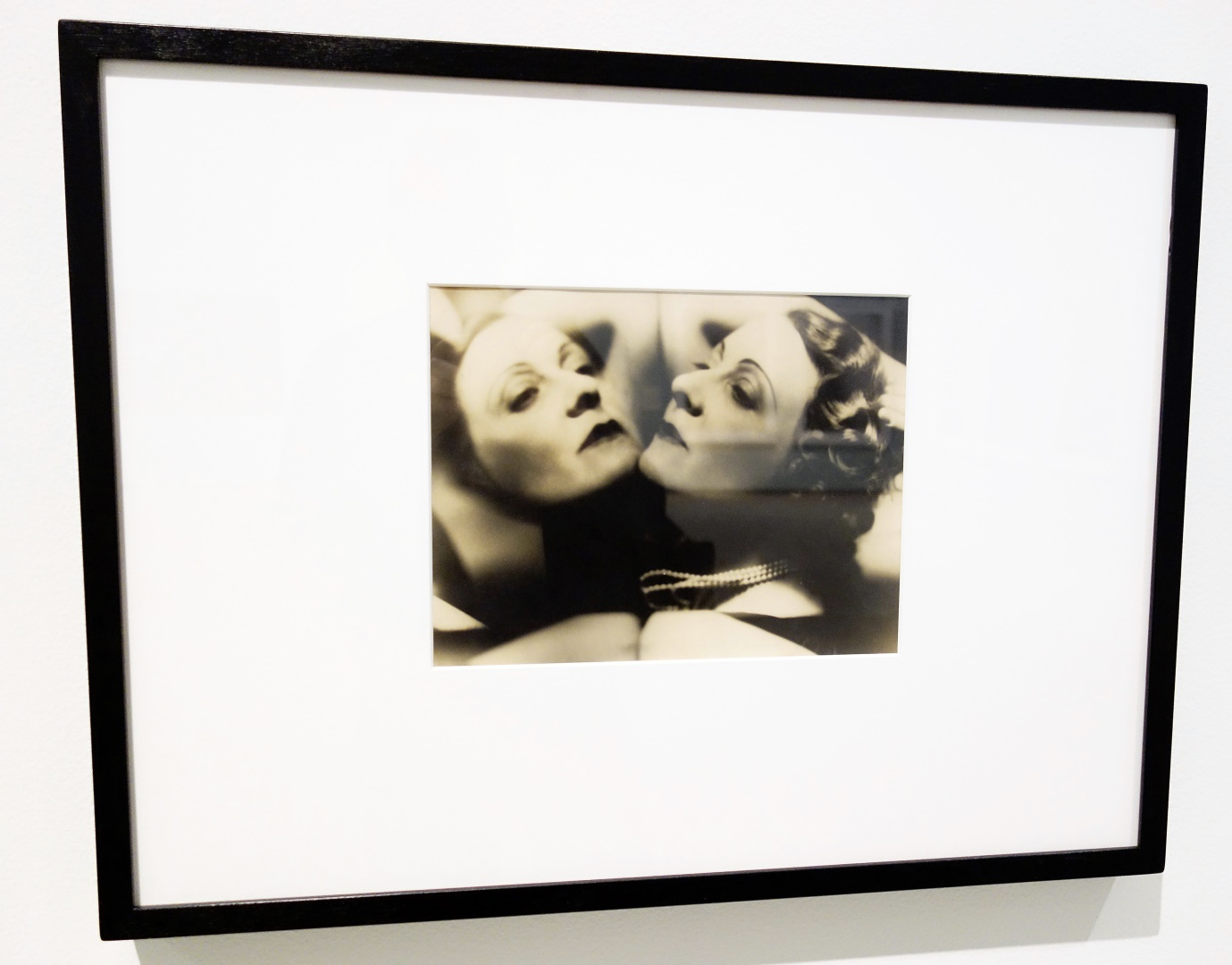
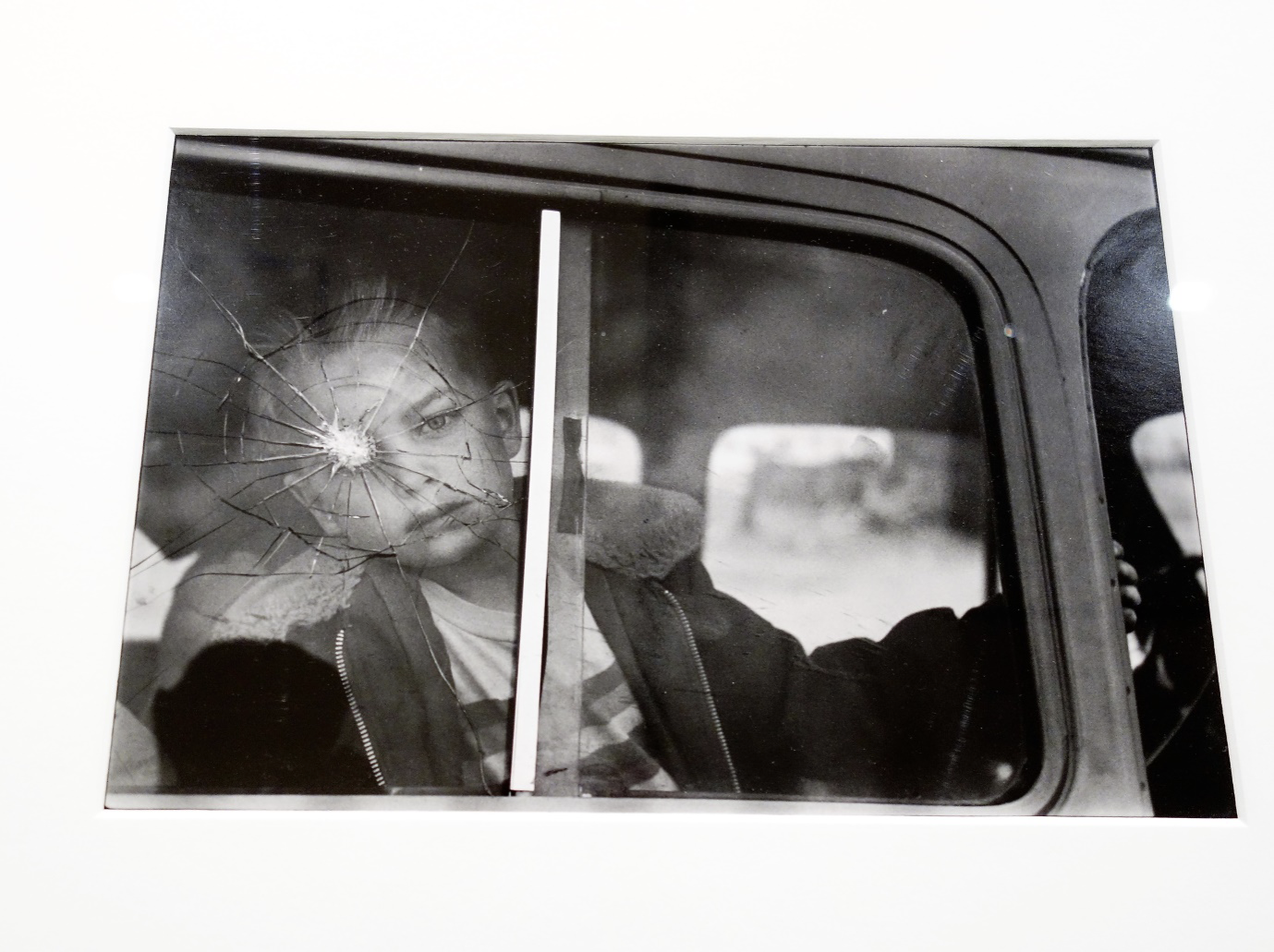
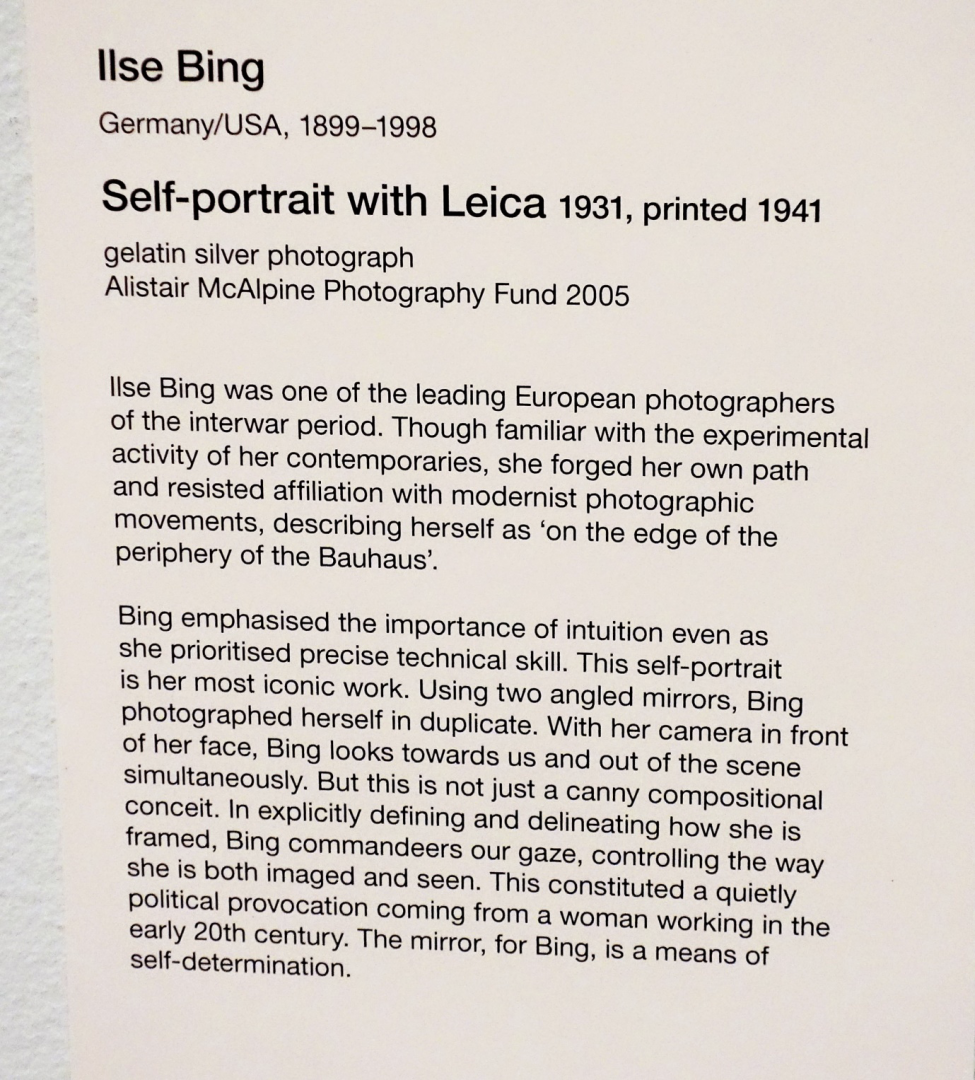


Thank you for thought provoking feedback William.
Yes, we are all subjective an emotional in what we choose, can’t help it, and you are quite correct that we sometimes try to cloak our choices in “a veneer of objectivity”. My better half assures me that even top art judges have their own subjective hats that they wear.
I’ll freely admit that the three images that I chose for myself weren’t the same as those chosen by my better half as we discussed the exhibition on the way home afterwards. And I suspect that you would have chosen other images as well. Vive la difference.
And you are right about the Erwitt photograph. I too think that it must have been carefully constructed and composed. But the idea must have come to him in a brilliant moment beforehand, as he pictured it in his mind’s eye. Hats off to him for that one, disturbing as it continues to be.
I do remember that you’ve made the observation previously that even HCB’s street photography was about careful considered planning, not just instant “snap-it-and-see”. Thoughtfulness leads to luck and sponteneity.
All art is down to personal choice and you reflect that in your article, Wayne. The first personal choice is that of the artist as regards what they are creating. With photography it may just be a simple choice such as what to include in the frame. The other area of personal choice lies on the side of observer or purchaser as regards which images say something to them.That is one of the reasons why I find photographic competitions somewhat counter-intuitive as they involve subjective choices which are sometimes masked with a veneer of objectivity.
I am glad to see Elliott Erwitt here. The photograph is, I suspect, set up as are a lot of his other ones. No photographer could be that lucky that often. However, he would have ‘seen’ a lot of his best images in advance himself and setting up such photos is part of the creative process. It is not all just about Cartier Bresson’s ‘decisive moment’. I met Elliott Erwitt at the Leica HQ in Wetzlar some years ago. When I told him I was from Ireland, he told me quite proudly that he done advertising photography for our national airline, Aer Lingus. A different kind of creativity, of course.
William
A pleasure to read this Wayne, thanks.
Cheers, Kevin. Glad you enjoyed it.
It was fun to put it together.
Three wonderful reflected black-&-white self-portraits?
vivianmaier.com/gallery/self-portraits/#slide-5
vivianmaier.com/gallery/self-portraits/#slide-11
..and, above all..
vivianmaier.com/gallery/self-portraits/#slide-13
Hello David.
Those Vivian Maier reflection self portraits are great. So sharp, tonally superb and imaginative. Good choices.
I’m guessing that the Art Gallery of NSW doesn’t have any of these images of hers in their collection, otherwise they would have been selected for the showing. As indicated, the images were chosen from the gallery’s own collection. What we saw is what we got, but that speaks to the aim of my presentation i.e. we will often not see our favourites in an art exhibition, but we should nevertheless attend, and challenge ourselves to find three works that we especially like, and consider why we like them.
But while we are on the topic of reflected images your comment jogged my memory of a couple of your own images. So I went back to your Paris portfolio on Macfilos 20 January 2020**.
Your #1 and #14 reflection images would have held their head high if included in the exhibition…..and there I go again, choosing favourites….but to be true to self I’ll have to go back to your Paris presentation and choose a third…..”Always choose three”.
** New Macfilos readers do plug “David Babsky Paris” into the macfilos search line and have a look at David’s top fifteen. There are some good ‘uns in there. Well worth a revisit for longer term Macfilosophers too.
Well, thank you Wayne! Mmm, I s’pose that if the Art Gallery of NSW doesn’t have any of a particular picture, then it can’t exhibit them – though, of course, some museums do often rotate their collections with other museums (musea?). (I’ve an idea that I’ve been to the Art Gallery of NSW ..is it near Melbourne? ..Oh, no; Googling it I see that it’s in Sydney ..so yes, I have been there.)
It’s great that you remembered those reflection photos ..(have I said this before?).. When in Mexico a few years ago I had this ..we-ell, more than an impulse.. this compulsion to take a photo of a Mexican dog crossing a road(!) ..not that I could see any dog anywhere, but I knew that that’s what I wanted to take a photo of ..goodness knows – or knew – why!
So I took my trusty – what was it? – Olympus E-M1 with me, and a short zoom, and wandered around a little town called Ajijic. And then I spotted a dog (..not a spotted dog..) crossing a cobbled road, and I took a photo of it. (I’m looking to see how I can embed the photo here, but it’d take me too long to paste it on my scrappy website and put a link to that here, etc..)
A few years later, my Beloved and I walked to a photo exhibition in Munich – I think I had my little Sony Thingummajig-100 with me ..so glad you like yours, too! – and it was a show of Sergio Larrain’s photos, or his were amongst them, and there was a photo of his ..of a dog crossing a cobbled road in Mexico! ..It was a mirror image of my own!
I must have seen his photo many, many years before (..in the sixties?) and it must have made such an impact that it stayed buried in my subconscious ..and so I felt compelled – but not knowing why! – to take a photo of a Mexican dog crossing a road. They’re almost like one photo which has been folded over to make a reversed print of the other!
..No; can’t find it online (..though he seems to have taken plenty of other photos of dogs..)
..Anyway, it’s funny how some pictures stay in one’s subconscious; but thanks for remembering mine!
All best wishes,
– David.
Cheers David.
Thanks for your further comment –
You’ve kick started my neurones for a next submission to our editor Michael.
It will require an archeological dig back into the atchives……stay tuned 🤔.
I love art galleries, but more to take interesting photos in. As they often give unique opportunities.
I like the last image carefully created by your beloved, it most certainly is a covid survivor. Trust me. It captures the horror of the moment. Although probably what she was thinking when creating it.
As for the images, you are right the second one is disturbing.
Enjoy the weekend folks.
Gday Dave.
Dianne says that her dark charcoal drawing was inspired by the the mood that the subject exuded during the sitting, so world-weary and just plain tired. I’d guess that Liz would admit that you’ve conveyed that look during the last few months. Good to know that you are slowly mending yourself. Do continue the recovery.
Wonderful article Wayne. There was an Ilse Bing exhbition recently in France. There’s an HCB exhibition later this year. Hope it opens after covid restictions. Being quite fond of galleries my camera of choice is the little Ricoh GRD4 which is really unobstusive.
Hello Jean. Thank you for feedback.
I’ve liked your GRD4 images that you’ve presented on Macfilos, so much that I’ve looked at them on Ebay, but haven’t hit Bid or Buy-it now as yet. They are developing a cult following and seem to move quickly. I do see that they provide great resolution from their lens, with the advantage of a depth of field that results from a small sensor. Tempting as another pocketable camera before phone cameras take over the world.
It’s thought-provoking and eye-riveting, Wayne. Very gripping images, not least your wife’s charcoal.
I also use a little Sony (RX100iii) as my unobtrusive gallery visiting camera.
Yes, all members of the Sony RX100 series are very convenient carry-anywhere cameras. And very capable. It has taken me a little time to get used to them, but I am finally feeling comfortable in their presence (thanks due to David Babsky extolling their virtues, which kept me using RX100s after selling my first one). However, I must admit becoming lazy with it – I rarely use the pop-up flip-out view finder. Such a neat fast little package.
Good choices Wayne, all three of them. Also oddly the preferred number of prints to put up on a wall are in groups of three or five. Your first choice looks so like a Garbo portrait. The second one is quite well known and is included in Erwitt’s book Snaps. Your third choice is my favourite, a wonderful self portrait.
I’m glad you liked it Farhiz. Threes and fives and other odd numbers, also preferred for bonsai. AnyMacfilos readers wish to provide a reputable psychlogical reason?
I haven’t seen Erwitt’s book Snaps. Will check it out. Thanks.
You make my brain hurt! It is start of weekend where I try not think of anything! Dam it your articles are always so captivating. Isle photo is what I think of when I think Leica and monochrom. The other two photos of hers that I love, Are the ones with the social distancing sitting on the wall steps and her snd friend on rooftop casting shadows.The drawing reminds me of HCB photo while he was in Mexico. Really enjoyed this article thank you.
Hang in there John. Two panadols will do wonders for a photo headache :-).
You’ve now prompted me to go back and learn a lot more about Ilse Bing. Thank you.
A thought-provoking article, Wayne, and welcome reading as the weekend approaches. Although, having said that, after twelve or more months of essentially living full-time at home, I seem to have lost the significance of what ‘weekend’ means. Couriers turn up whatever day of the week suits them.
I agree with you about that lovely Bing self-portrait.
Yes, David, the Ilse Bing self portrait, beautifully constructed and presented.
Thank you Wayne for this interesting article and the proposed approach. I for sure will deploy it.
Thank you Ulrich. It’s a good fun approach to an art exhibition. Well, that’s my subjective view of course.